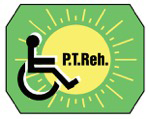


|
Current issue
Archive
Manuscripts accepted
About the journal
Editorial board
Reviewers
Abstracting and indexing
Contact
Instructions for authors
Publication charge
Ethical standards and procedures
Editorial System
Submit your Manuscript
|
1/2020
vol. 34 abstract:
Original paper
An assessment of adaptation of Cracow’s cultural institutions to the needs of wheelchair users
Aneta Bac
1
,
Karolina Kowal
1
,
Paulina Aleksander-Szymanowicz
1
,
Katarzyna Filar-Mierzwa
1
,
Edyta Janus
1
1.
Bronislaw Czech University of Physical Education in Cracow, Poland
Advances in Rehabilitation, 2020, 34(1), 13–18
Online publish date: 2020/02/18
View full text
Get citation
ENW EndNote
BIB JabRef, Mendeley
RIS Papers, Reference Manager, RefWorks, Zotero
AMA
APA
Chicago
Harvard
MLA
Vancouver
Introduction
Adequate adaptation of establishments to the needs of various groups of users is important both because of users’ physical ability to enter and move around a certain place, and also because it allows these users to participate in social life. It is the competence of occupational therapists to design ergonomic environmental space for various people, including those with motor system dysfunctions. Material and methods The study was conducted in randomly chosen culture and entertainment establishments of Cracow. The studied establishments were art houses, libraries, museums and pubs. The study tool was our own questionnaire for assessment of accessibility of the establishments for wheelchair users. Results We assessed the accessibility of the entrance. In this criterion, museums had the best results, and pubs had poorest results. In changes of the level inside the establishment, libraries and cinemas were best, and museums were poorest. In toilet assessment, museums had best results, and pubs and libraries had poorest results. In most of the establishments, toilets were not accessible for people in wheelchairs. Conclusions The mean level of adaptation of the studied culture and entertainment establishments in Cracow shows that they are only partially accessible. The type of establishment was related to the its accessibility level. Museums proved to have best accessibility, and pubs had the poorest accessibility. The location of the establishments (the district) impacted the architectural barriers. keywords:
architectural barriers, people with disabilities, occupation therapy, cultural institutions |
    |